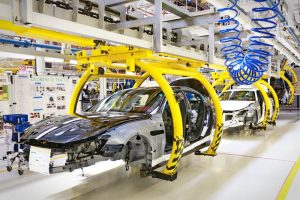 The Covid-19 pandemic has brought the entire world to a standstill. In an unprecedented and unseen situation, that seems to be right out of the script of a Hollywood blockbuster, the virus, which at the beginning of 2020 was reported as just a cause for concern with world health bodies sharing the Coronavirus symptoms widely to educate individuals who have been exposed to it, has now become a full blown pandemic with many first world countries doing their best to limit the extent of the impact.
The Covid-19 pandemic has brought the entire world to a standstill. In an unprecedented and unseen situation, that seems to be right out of the script of a Hollywood blockbuster, the virus, which at the beginning of 2020 was reported as just a cause for concern with world health bodies sharing the Coronavirus symptoms widely to educate individuals who have been exposed to it, has now become a full blown pandemic with many first world countries doing their best to limit the extent of the impact.
While research scientists and medical experts across the world are striving day and night to come up with a Coronavirus vaccine that could save millions of lives, the virus has already crippled many industries, with scores of people forced to work from home and many organisations – small and big – unable to sustain their once illustrious workforce.
While the impact of the Coronavirus is prevalent in various regions across the world already, including numerous first world countries, there are still many nations which are bracing to fight against the impact of the virus, as many research institutes have stated on record that a Coronavirus treatment or a cure will be available only in 2021.
This has led to not only defining standard methods and practices to fight against the spread of the pandemic, but also measures to revive the economy and industry which has been in an impasse since the acute effects of the virus were made known. Here, we look at some of the most affected industries and the plans in motion to resurrect them.
AUTOMOTIVE INDUSTRY:
The automobile industry being heavily dependent on manufacturing plants and the supply chain eco-system for various components, has been severely handicapped with sales declining sharply and many if not all manufacturing facilities completely shut down along with large consumer markets that the auto industry depends upon for its sales and revenue.
While leading manufacturers in the automobile industry were already grappling with the rise in demand for electric vehicles from consumers, the pandemic has further impinged this sector. The automobile industry is now eyeing a phase wise restoration to kick-start production while keeping in mind continuous developments in the following areas:
-
Overall business blueprint:
While companies need to stay agile to the changing landscape, it is imperative that they don’t lose focus of the bigger picture and continue to identify and enhance aspects that separate them from competition.
-
Economy & capital:
organisations need to streamline cash flow, with a keen eye on latest developments to explore new avenues of capital including partnerships & other sources of funding, while also re-calibrating financial opportunities based on new operational methods to extenuate risks.
-
Manpower and personnel:
With the absence of team members on site, new and model solutions will be required for generic tasks for which companies were previously dependent on the physical presence of the team, leading to optimal resource allocation.
-
Revise & resume:
A two-pronged approach where institutions revise their methods of working by determining unseen value in operating costs such as optimizing a previously untapped products in the supply chain & restate new goals with dedicated capital efforts and means to achieve these goals remotely to resume operations.
The automotive industry is gearing to introduce new health & safety features in upcoming models, which will also be a factor that consumers will consider in their purchasing decision.











